Related Research Articles

Islam has been practiced in China since the 7th century CE. There are an estimated 17–25 million Muslims in China, less than 2 percent of the total population. Though Hui Muslims are the most numerous group, the greatest concentration of Muslims reside in northwestern China's Xinjiang autonomous region, which contains a significant Uyghur population. Lesser yet significant populations reside in the regions of Ningxia, Gansu and Qinghai. Of China's 55 officially recognized minority peoples, ten of these groups are predominantly Sunni Muslim.
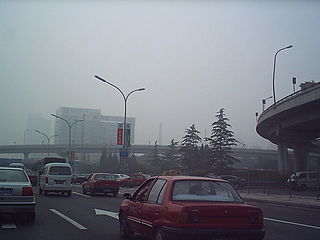
Madian is a community in Haidian District, Beijing, China. It is adjacent to the intersection of the 3rd Ring Road and the Jingzang Expressway, at the Haidian District-Xicheng District border. Two separate subdistrict offices serve portions of Madian.

Hami or Kumul is a prefecture-level city in eastern Xinjiang, China. It is well known for sweet Hami melons. In early 2016, the former Hami county-level city merged with Hami Prefecture to form the Hami prefecture-level city with the county-level city becoming Yizhou District. Since the Han dynasty, Hami has been known for its production of agricultural products and raw resources.
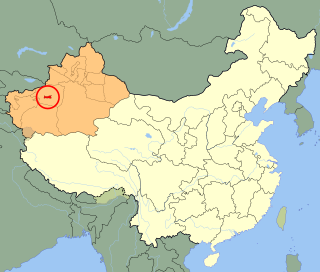
Aral is a sub-prefecture-level city surrounded by Aksu Prefecture in Xinjiang Uyghur Autonomous Region, China. Aral means "island" in Uyghur. The city's name is often written as Alar.

Wujiaqu is a county-level city in the northern part of Xinjiang Uyghur Autonomous Region, China, about 40 kilometres (25 mi) north of Ürümqi.

Bayingolin Mongol Autonomous Prefecture is an autonomous prefecture in the southeastern Xinjiang, China. It borders Gansu to the east, Qinghai to the southeast and the Tibet Autonomous Region to the south. It is the largest prefecture-level division nationally, with an area of 471,480 km2 (182,040 sq mi), which is even larger than its neighboring province of Gansu. The prefectural capital is Korla. Despite being designated an autonomous area for Mongols in China, only about four percent of Bayingolin's population is Mongol.
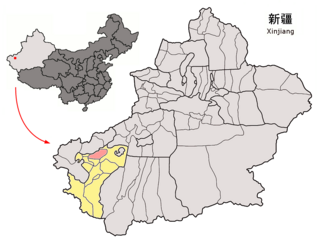
Payzawat County, also via SASM/GNC romanization as Payziwat County, and via Mandarin Chinese as Jiashi County is a county in Kashgar Prefecture, Xinjiang Uyghur Autonomous Region, China, on the western rim of the Taklamakan Desert. To the east, the county borders Maralbexi County, to the south Yopurga County.

Makit County is a county in Kashgar Prefecture, Xinjiang Uyghur Autonomous Region, China. It contains an area of 10,927 km2 (4,219 sq mi). The Yarkand River passes through the county. The county is bordered to the north by Maralbexi County, to the east by Guma County (Pishan) in Hotan Prefecture, to the west by Yarkant County, and to the south by Kargilik County.

Toksun County is a county in Turpan, Xinjiang Uyghur Autonomous Region, China.

Hotan Prefecture is located in the Tarim Basin region of southwestern Xinjiang, China, bordering the Tibet Autonomous Region to the south and Union Territory of Ladakh and Gilgit-Baltistan to the west. The vast majority of the Aksai Chin region which is disputed between China and India is administered as part of Hotan Prefecture. The seat of Hotan Prefecture is Hotan and its largest county by population is Karakax County. The vast majority of the residents of the prefecture are Muslim Uyghurs and live around oases situated between the desolate Taklamakan Desert and Kunlun Mountains.
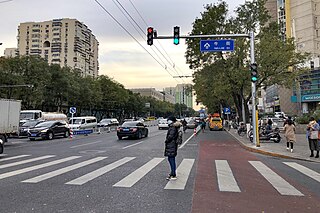
Niujie is a subdistrict in Xicheng District in southwest Beijing, China. The name "Niujie" can refer to the street Niujie or to the neighborhood Niujie. The subdistrict was previously in Xuanwu District before the district was merged into Xicheng District in 2010. As of 2020, its total population is 51,410.
Weigongcun area is an area of Haidian District, Beijing. It houses Minzu University of China, Beijing Foreign Studies University, and Beijing Institute of Technology. It has restaurants from a wide variety of ethnic minorities. According to Minzu University anthropology professor Zhuang Kongshao, the area has been the Uyghur ghetto in Beijing since the Yuan Dynasty, when it was known as Weiwucun and was a local shopping area. The Qing scholar Qiao Songnian claimed in 1834 that the Uyghurs had been brought there by Yuan Taizu. The name Weigongcun is first recorded only in 1915, and removes any reference to Uyghurs. Others attribute the ethnic variety solely to the presence of CUN. Most of the Uyghur district was razed around 2001.

Xinjiang, officially the Xinjiang Uygur Autonomous Region, is an autonomous region of the People's Republic of China (PRC), located in the northwest of the country at the crossroads of Central Asia and East Asia. Being the largest province-level division of China by area and the 8th-largest country subdivision in the world, Xinjiang spans over 1.6 million square kilometres (620,000 sq mi) and has about 25 million inhabitants. Xinjiang borders the countries of Afghanistan, India, Kazakhstan, Kyrgyzstan, Mongolia, Pakistan, Russia, and Tajikistan. The rugged Karakoram, Kunlun and Tian Shan mountain ranges occupy much of Xinjiang's borders, as well as its western and southern regions. The Aksai Chin and Trans-Karakoram Tract regions are claimed by India but administered by China. Xinjiang also borders the Tibet Autonomous Region and the provinces of Gansu and Qinghai. The most well-known route of the historic Silk Road ran through the territory from the east to its northwestern border.
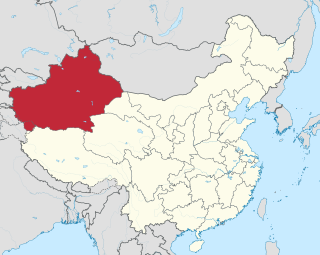
The Xinjiang conflict, also known as the East Turkistan conflict, Uyghur–Chinese conflict or Sino-East Turkistan conflict, is an ethnic geopolitical conflict in what is now China's far-northwest autonomous region of Xinjiang, also known as East Turkistan. It is centred around the Uyghurs, a Turkic ethnic group who constitute a plurality of the region's population.

Nanjing was the name for modern Beijing during the Khitan-led Liao dynasty of China, during which it served as the empire's southern capital. To distinguish "Nanjing" from the modern city of Nanjing in Jiangsu, and Beijing Damingfu, the name for modern Daming County in Hebei Province during the Northern Song dynasty, Chinese historians sometimes refer to Liao-era Beijing as Liao Nanjing. The Liao acquired the city, then known as Youzhou, in the cession of the Sixteen Prefectures in 938 by the Later Jin, one of the five short-lived dynasties that ruled northern China following the end of the Tang dynasty. The city was officially renamed "Nanjing, Youdu Fu" (南京幽都府). In 1012, the city was renamed "Nanjing, Xijin Fu" (南京析津府). The city was also colloquially referred to at the time as "Yanjing". In 1122, the city was captured by the Jurchen-led Jin dynasty (1115–1234)—who officially renamed it "Yanjing", ending the use of "Nanjing" for what is today modern Beijing.
Xinjiangcun or Xinjiang Village was an ethnic enclave of Uyghur people in the Ganjiakou and Weigongcun areas in Haidian District, Beijing. The Beijing government demolished the settlement in 1999. It is in proximity to a historical Uyghur enclave in Beijing.

Beijing has a large community of Hui people, totaling 249,223 people per the 2010 Chinese Census, or 2.35% of the city's total population. As of 2010, the Hui are the second largest minority in the city, behind the Manchu. Neighborhoods with high concentrations of Hui people, such as Niujie, exist throughout the city.
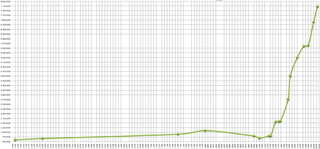
The registered population of Beijing Municipality consists of people holding either Beijing permanent residence hukou permits or temporary residence permits. The 2010 census revealed that the official total population in Beijing was 19,612,368, representing a 44% increase over the last decade. In 2006, the population of the urban core was 13.33 million, 84.3 percent of the total municipal population, which officially stood at 15.81 million. Urban sprawl continues at a rapid pace.

The 2010 census put Shanghai's total population at 23,019,148, a growth of 37.53% from 16,737,734 in 2000. 20.6 million of the total population, or 89.3%, are urban, and 2.5 million (10.7%) are rural. Based on population of total administrative area, Shanghai is the second largest of the four direct-controlled municipalities of China, behind Chongqing, but is generally considered the largest Chinese city because Chongqing's urban population is much smaller.

Migration to Xinjiang is historical movement of people, often sponsored by various states who controlled the region, including the Han dynasty, Tang dynasty, Uyghur Khaganate, Yuan dynasty, Qing dynasty, Republic of China and People's Republic of China.
References
- Baranovitch, Nimrod (University of Haifa). "Inverted Exile: Uyghur Writers and Artists in Beijing and the Political Implications of Their Work." Modern China . SAGE Publications. October 2007 33: 462-504, doi: 10.1177/0097700407304803.
- Kaltman, Blaine. Under the Heel of the Dragon: Islam, Racism, Crime, and the Uighur in China. Ohio University Press, 2007. ISBN 089680254X, 9780896802544.
- Millward, James A. (1998). Beyond the Pass: Economy, Ethnicity, and Empire in Qing Central Asia, 1759-1864 (illustrated ed.). Stanford University Press. ISBN 0804729336 . Retrieved 10 March 2014.